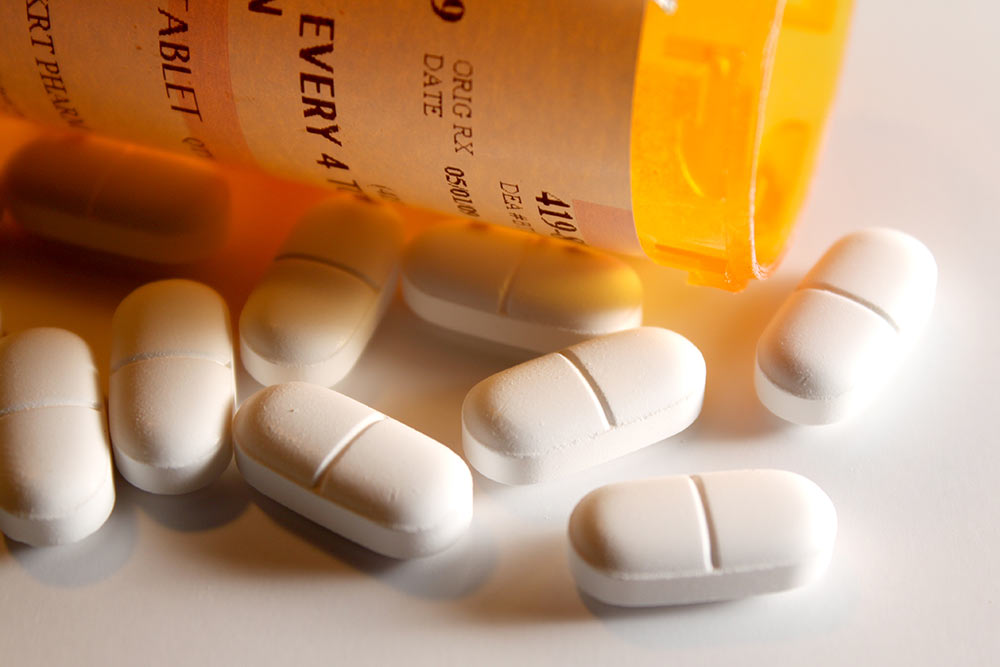Read the latest and greatest from our team
of incredible specialists.

Beach House Recovery Center » Blog » Vicodin Withdrawal Symptoms & Timeline
Vicodin is a pain-relief medication that combines acetaminophen (the over-the-counter pain reliever used in Tylenol) with hydrocodone bitartrate, a semi-synthetic opioid. Like all opioid-based pain relievers, Vicodin attaches itself to nerve receptors to increase the effects of endorphins in the body. This stimulates positive feelings and reduces anxiety and pain. Doctors frequently prescribe Vicodin for patients healing from surgery.
Unfortunately, since the body quickly becomes accustomed to increased-endorphin effects, prescription opiates also have high addiction potential. Over 4.3 million Americans are known to use opioid medications outside of official prescription instructions, and over 2 million suffer from full-blown addiction, meaning painful withdrawal symptoms if use is discontinued. Vicodin, because of its acetaminophen content, also carries a risk of liver damage with long-term use, especially when taken in conjunction with over-the-counter medications that contain additional acetaminophen.F
This article will educate readers on the specifics of Vicodin addiction, the typical withdrawal timeline and common vicodin withdrawal symptoms. It will also discuss medically recommended detox procedures, both in general and as used at Beach House Center for Recovery.

Many medical professionals consider Vicodin an over-prescribed and under-regulated drug. The general public finds it relatively easy to obtain; around 20 percent of high school students have experimented with it.
Most patients who take prescribed Vicodin develop a certain level of physical dependence, to the point of noticing the sudden change in endorphin levels when usage ceases. (This can be emotionally and sometimes physically dangerous, so even non-addicted patients should discontinue medications under medical supervision.) However, genuine addiction (which usually includes going beyond official prescription instructions) may produce any number of unpleasant vicodin withdrawal symptoms upon sudden cessation.
Common initial symptoms include:
Later in the vicodin withdrawal period, common symptoms include:
Apart from PAWS (which not all patients experience), full Vicodin withdrawal typically takes from a week to 10 days, with the worst discomfort in the first half of the period. (The drug itself disappears from the body within eight hours of the last dose.)
The exact length of the vicodin withdrawal period may be affected by:
In any case, qualified medical supervision is important when entering voluntary Vicodin withdrawal. A licensed physician familiar with stoppage effects and risks will be able to recognize and quickly treat any physical dangers that manifest with the withdrawal effects. Detoxing at a medical center puts a patient in the best position for prompt meeting of individual needs, including psychological support and encouragement.
A medical doctor can also provide withdrawal-assistance medications appropriate to a patient’s situation. The medications commonly used in detox include:
In addition to chemical medications, patients undergoing detox may benefit from various alternate methods of pain relief, including mindfulness exercises, acupuncture and massage. Psychotherapy helps the patient understand the mechanics of craving and how to combat it.
At Beach House Center for Recovery, clients in detox receive 24/7 medical care and oversight, including addiction-specific psychiatry, as part of an inclusive detox and treatment plan of care. Individual attention to each patient’s needs ensures effective detox and treatment, and significantly reduces the risks of relapse.
Our four-step detox approach includes:
Whether you’re researching for yourself or a loved one, Beach House can help. We understand that this is a serious time in your life and that the treatment center you choose matters. We want you to feel comfortable and empowered to make the right decision for yourself, a friend, or a family member. This is why a counselor is waiting and available to answer your questions and help put your mind at ease regarding the next steps. Many of the staff at Beach House have walked in your shoes. If you feel you’re ready or want more information about how to help a loved one, we can help today. You can also learn why we are voted the #1 rehab for addiction treatment in Florida.
We accept most major insurance plans and can verify your benefits quickly and confidentially.
We’re committed to helping you access the care you need, our admissions counselors can guide you through your coverage options and available resources.





"*" indicates required fields